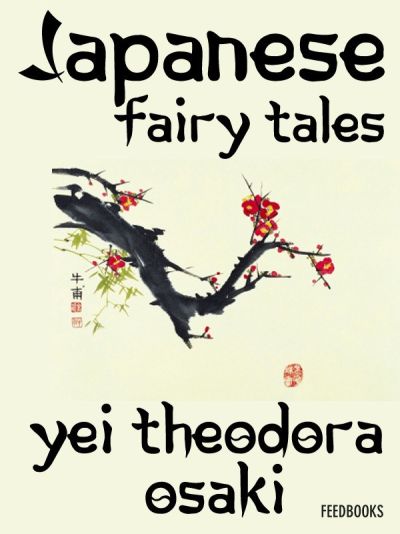Tell Me A Story
Japanese Fairy Tales
Edited by Yei Theodora Ozaki (Translated by Yei Theodora Ozaki)

15 Mar, 2023
0 comments
Yei Theodora Ozaki’s 1908 Japanese Fairy Tales is a collection of Japanese fairy tales, curated, translated, and amended for an English-speaking audience.
A note for parents of children with beloved pets: being an adorable animal does not protect characters from mutilation or death in these tales.
Born in England to a Japanese father and a British mother, Yei Ozaki was raised in both England and Japan. Her background provided her with perhaps the ideal background to translate Japanese stories into English of a child-friendly simplicity1. Japanese Fairy Tales (originally published as The Japanese Fairy Book in 1903) was her first major project.
You may wonder how many stories it takes before I am not willing to tackle a collection or anthology story by story. The limit is ill-defined, but I did discover that the twenty-two short pieces in this book definitely exceed the threshold.
No doubt aware of the cultural limits of her intended audience, sequestered from the world as they are on a little-visited mist-shrouded island off the coast of Europe, Ozaki is judicious in her presentation, opting for less formal language. Also, most of the stories are very short, suitable for the attention span of children and Tory voters. On the plus side, no one story should take long to read. On the minus, most are so short that tired parents may find it hard to say no when children are begging for “just one more story.”
While the stories appear to be judiciously amended so as not to inflame alarm in the intended audience2, there remains a significant element of the original culture in these tales, extoling as they do virtues like filial piety and just obedience to one’s superiors. Children learn such valuable lessons as “never trust a monkey,” “there are worse fates than death,” “never trust a monkey,” “step-mothers are often bad and generally untrustworthy,” “never trust a monkey” (honest, this comes up a lot), and “if a semidivine woman advises you to keep a certain box closed, follow her advice.” That said, a number of the stories seem to have parallels in Western fairy tales. Common source or a side-effect of Ozaki’s translation?
As one might expect from stories aimed at children, bad people invariably get their comeuppance (not that this necessarily does their victims any good). Interestingly, while horrifying death is on the menu, sufficiently apologetic antagonists are allowed to admit error and embrace reform, which provides an interesting change of pace from the drownings and decapitations.
Some editions have lavish illustrations — the edition I had as a child did — but not, as it happens, the version I downloaded from Project Gutenberg. Too bad, because I remember they were pretty good.
Japanese Fairy Tales is available here (Amazon US), here (Amazon Canada), here (Amazon UK), here (Barnes & Noble), here (Book Depository), here (Chapters-Indigo), and here (Project Gutenberg).
1: Yei Ozaki is notable for the meet-cute that led to her marriage. The postal service frequently delivered mail to an unrelated government functionary, Yukio Ozaki, to Yei Ozaki and her mail to Yukio. Combining households resolved the issue. More people should be considerate of such post office challenges.
2: Evil step-mothers appear to be a universal phenomenon.
